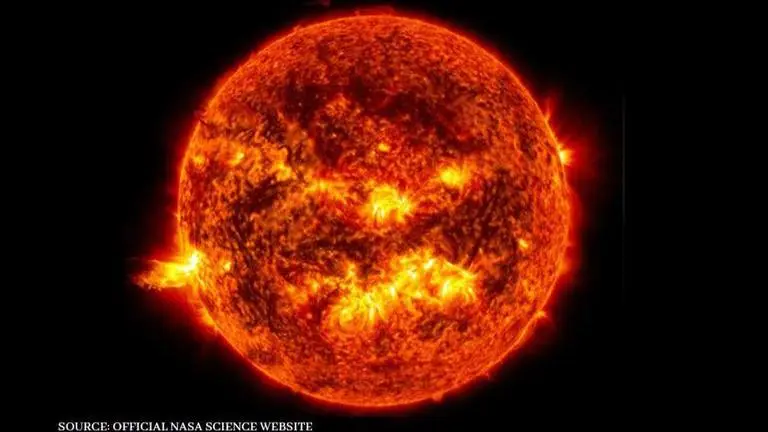Updated 11 June 2020 at 16:30 IST
Solar flare 2020: Sun experiences its biggest flare in three years
Solar Flare 2020: NASA recently reported that the Sun has experienced one of its biggest solar flares since almost three years. Read more details.
- Science News
- 2 min read

NASA recently reported that the Sun has experienced one of its biggest solar flares since October 2017. Though the sunspots caused by the solar flare are not yet visible, a NASA spacecraft spotted the flare high above it. NASA reported that the flares were too weak to pass the threshold at which NOAA's Space Weather Prediction Center provides alerts. The Space Weather Prediction Center is the US government's official source which provides weather forecasts, alerts, warnings and watches on space.
Image courtesy - NASA official website
What is a solar flare?
A solar flare is an intense burst of radiation that results due to the release of magnetic energy associated with sunspots. Flares are also identified by NASA as our solar system's largest explosive events. They can be spotted as bright areas on the sun and often last from minutes to hours. The primary way NASA studies solar flares is by monitoring them in X-rays and optical light.
Advertisement
The Sun moves through an 11-year cycle, where its activities rise and fall. The recently recorded solar flares on the Sun suggest that the quiet period of the Sun is getting over and the period of Solar Cycle 25 will commence soon. This new sunspot activity has also been speculated to be a sign that the Sun is possibly revving up to the new solar cycle and has passed through a period of minimum. The solar flares observed recently were reportedly not strong enough to affect the geomagnetic space but, it was the first M-class flare in almost three years.
Also read: Elon Musk not satisfied with ISS; tells SpaceX staff to focus on Starship for Moon & Mars
Advertisement
When is the next solar flare?
Currently, scientists from NASA are observing various sunspots in order to determine the dates of solar minimum. It is difficult to predict when the radiation activity in the Sun will increase thus a definite time for the next solar flare cannot be pointed out. This is particularly because the Sun is extremely variable.
Even if the number of sunspots goes up or down, it won't change its course consistently. Scientists reportedly are looking to find a consistent upward trend in solar activity which can signify the exact change the Sun is going through. Concrete developments on recent solar activity are still awaited.
Published By : Amir Khollam
Published On: 11 June 2020 at 16:30 IST

